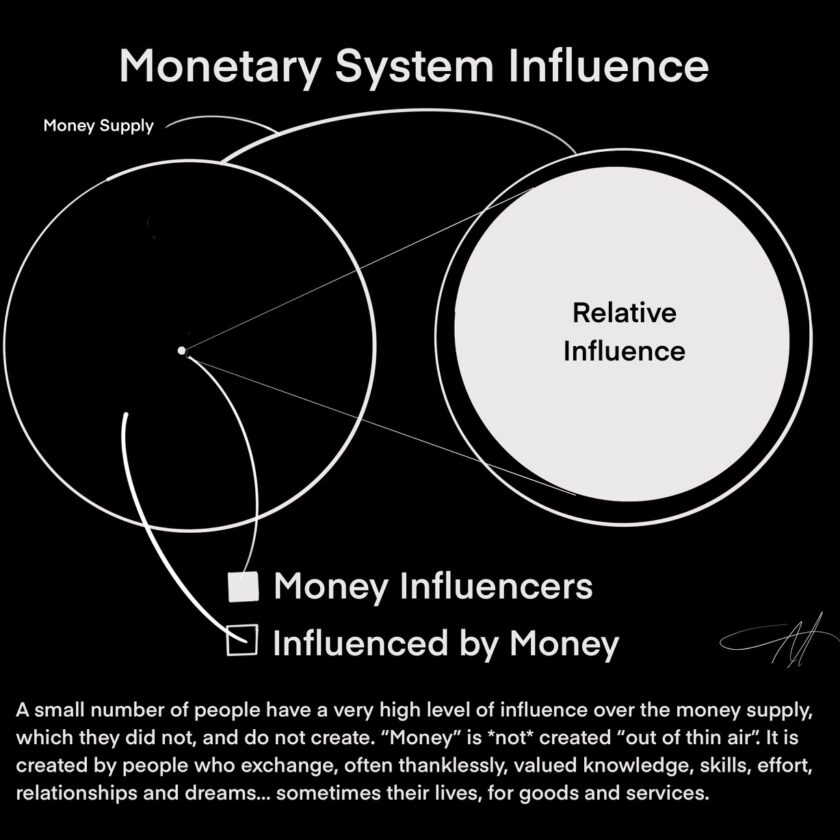On the ‘Birthing’ of New Futures
There is an axiom that has been repeated many times over the years, which states:
“He who does not know the past is doomed to repeat it.”
Written by Spanish-American philosopher, Jorge Agustín Nicolás de Santayana (1863-1952), the phrase is often pounded home by activists who are in angry opposition to the status quo.
Depending on where they stand, they either angrily demand change, or they angrily voice their opposition to it. The axiomatic rallying cry is thought to be incontrovertible. Therein lies the trap, and perhaps the birth of a new axiom. May I propose:
“He who accepts a negative truth without question is likely to perpetuate it.”
We perpetuate “truths” all the time. Santayana’s axiom is just one example. However, we would be wiser to discriminate as to its real effect. In actuality, perpetuating, i.e. believing in any proposed truth – whether it is positive or negative – is to create a reality and relationships in which to experience it.
On the morning that I wrote this article, Santayana’s axiom was on my mind. While I had heard the phrase many times over the years, I did not know who said it. I had never heard of Santayana, yet his words seemed to true for so many people. Like a “thought flag,” this axiom has been waved back and forth to trumpet the importance of paying attention to great problems that might befall us if we choose a particular path, always pointing to history, of course, as the supporting “pole” to said flag. However, on some reflection, I was aware of something different in my feelings about Santayana’s idea: that is, how misleading it is; not in intent, but in effect.
The fact is that we are not predisposed to “repeating the past” as Santayana suggests. There may be other “civil” wars, but never another Civil War, fought by the same people, or for the same reasons. Though there was another “World War,” it was not another World War I. The battlefields were different, as were the people and nations who engaged in the conflict. These events were unique. They happened only one time. Yet, the “tone and tenor” associated with these events have been recurring and constantly renewed. Given our insistent flirtation and affair with war, we could argue that knowing the past is no guaranty against its escalated re-enactment. In actuality, it has been a too familiar option, perhaps because we tend to reference “the past” (history) in establishing our attitudes and beliefs of the present.
The disconnect with Santayana’s theorem comes from my realization that “the past” is actually “unrepeatable.” Yet, harm is repeatable… that is, if enough people – for whatever their reason – are willing to harm others, or fear being harmed by others. Fear and willingness to engage in harmful behavior, sets sorrowful futures into motion that eventually become lamented points of our human past. War would not be possible without this willingness or fear.
Maintaining a belief that we have enemies among our human family, and “ranking” ourselves perceptually in terms of race, intelligence, wealth, worth, and so on, keeps arbitrary rivalries – as well as reasons for continued belief that harm is inevitable – alive. Transferring our sense of power, respect, and faith into sticks and stones, guns, and bombs, instead of in the harmony that we can share with each other, maintains the status quo. The past has nothing to do with that. It’s all about what we keep “alive” in the present.
One who does not know the past is not predisposed to “repeating” it. However, one who focuses his attention and energy on negative past events — fearing their repetition and (albeit unconscious for many) supporting a willingness to harm or be harmed — will indeed create resonant experiences in one form or another, in his future. That is a truth. It is equally true that one who sees a bright, healthy, harmonious, abundant future, will be an integral part of its creation. Who is willing to accept this idea on face value, without questioning, as readily as we have accepted Santayana’s axiom?
There are many people who have not seen or experienced health, harmony, or abundance in their life. As such, they will have a hard time believing that such wonders are possible for them, even when they see others enjoying the succulent fruits of “a good life.” It will be far easier for them to accept the rationalization that the “playing field is not level”, things will be better “over yonder,” our social systems are flawed, greed abounds, or that government regulation and laws must protect the “ordinary man.” And yet, I suggest, that if we don’t first believe that the extraordinarily wonderful is possible to achieve, we will not see or experience it…that is, until we do. The first domino to such change is tripped when we set our anger and pre-judgment (prejudice) aside.
In the same way that fire cannot burn in a space where oxygen has been removed, the light of our imagination and inspiration, where new, life-transforming ideas come from, cannot be seen when we are angry, or convinced that the only outcomes that will happen for us are negative, and positive outcomes only happen for someone else. Resentment and fear “grounds” us to misery (real or imagined), allowing us to “see” no other way to for things to happen. It weighs our mind down with every “logical” reason why something or someone is wrong, and why things will never get better. What a way to live!
Let’s call an “ideological spade,” a spade. “The past” is not the problem. It is the proclivity to harbor anger, fear, and judgment against others in the present that maintains the likelihood of further harm causing, and anger-perpetuating experiences in the future. Truly, if we want to create new, more wonderful futures, anger, fear, and judgment must be “checked” at the door. If the past teaches us anything, it would be the importance of looking forward with an open, hopeful mind and harmless heart, and including ourselves as active participants, both in the new future’s unfolding and in its enjoyment. This way we can give Santayana’s axiom a well-deserved respite, for the future will be considered anything but a representative of “doom.”
Copyright © 2002-2006 Adam Abraham All rights reserved






Thanks Adam….I was called by the archetype of the ArchAngel Gabrielle …
The gifting of Gabrielle is Art and communication.
and there are oonly 26 letters in the alphabet….several are not used very often so that reduces the ‘shapes” of letters down to an easily identifiable ‘code’.
It is not hard to see the AnagrOMs once we open our eye to the Mystic Linguistic realm….
Here is one:
What happens when we cast a NET into the Magic of life?
We become MAG~net~IC beings of course!
Magnetic
Magic
Imagination
Magi
Geni
Genius….
Most people turn up to the Magic with a thin piece of inherited cotton having long forgotten that they ARE the net..AND the MAGIC!
😉
This is SWEET! Carol, you have a GIFT!
Regarding “repeating the past”
PATTERN
ENTRAPT
Linguistic “AnagrOM”
PATTERN
T’PARENT
Same word different choice….knowledge of the coded and patterned beliefs and be’LIE’fs offers new choices..
C.H.O.I.C.E.S.
C~hoosing
H~ealthier
O~ptions
I~nstead of
C~hoosing
E~ndless
S~tress
😉
Carol